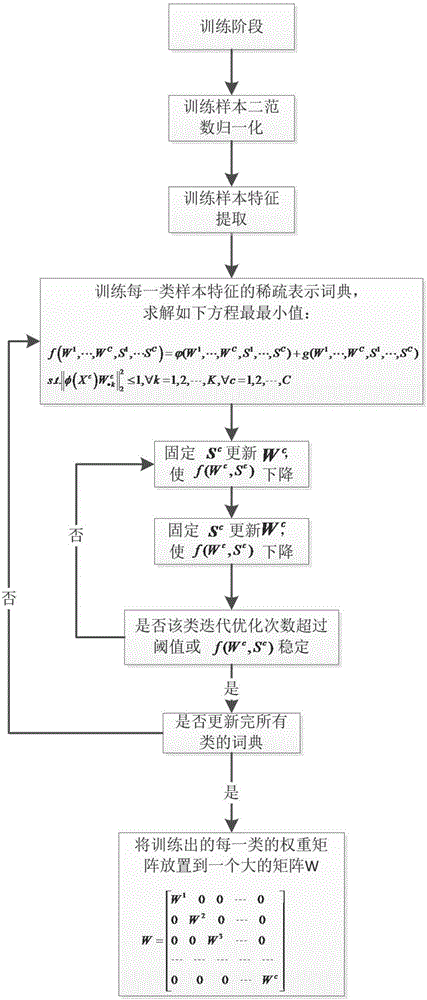Design method for linear discrimination of sparse representation classifier based on nuclear space
A technology of sparse representation and design method, applied in the field of pattern recognition, which can solve the problems of large fitting error and low accuracy of classifiers
- Summary
- Abstract
- Description
- Claims
- Application Information
AI Technical Summary
Problems solved by technology
Method used
Image
Examples
Embodiment Construction
[0072] The present invention will be further described below in conjunction with the accompanying drawings.
[0073] A method for designing a linear discriminative sparse representation classifier based on a kernel space, comprising the following steps:
[0074] Step 1: see figure 1 , to design a classifier, the steps are:
[0075] (1) Read the training samples, the training samples have a total of C classes, define X=[X 1 ,X 2 ,...,X c ,...,X C ]∈R D×N Indicates the training sample, D is the feature dimension of the training sample, N is the total number of training samples, X 1 ,X 2 ,...,X c ,...,X C respectively represent the 1st, 2nd,...,c,...,C class samples, define N 1 ,N 2 ,...,N c ,...,N C Respectively represent the number of training samples of each type, then N=N 1 +N+,…+N c +…+N C ;
[0076] (2) Carry out two-norm normalization to the training samples to obtain normalized training samples;
[0077] (3) Take out each class in the training sample in ...
PUM
 Login to View More
Login to View More Abstract
Description
Claims
Application Information
 Login to View More
Login to View More - R&D
- Intellectual Property
- Life Sciences
- Materials
- Tech Scout
- Unparalleled Data Quality
- Higher Quality Content
- 60% Fewer Hallucinations
Browse by: Latest US Patents, China's latest patents, Technical Efficacy Thesaurus, Application Domain, Technology Topic, Popular Technical Reports.
© 2025 PatSnap. All rights reserved.Legal|Privacy policy|Modern Slavery Act Transparency Statement|Sitemap|About US| Contact US: help@patsnap.com



